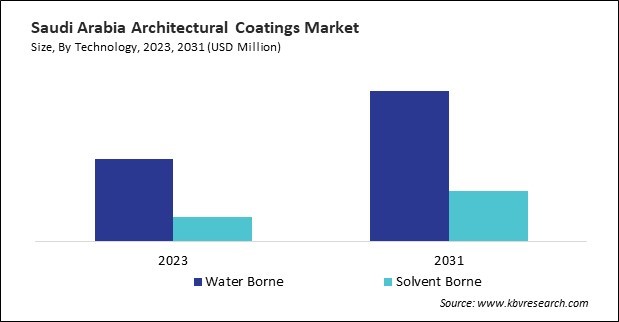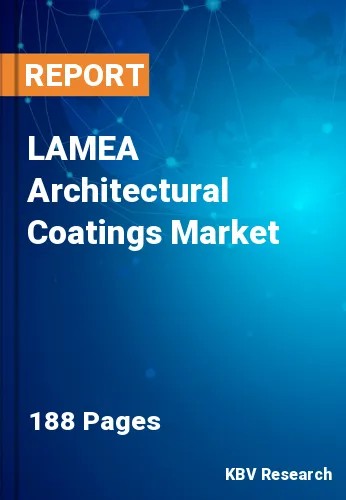The Latin America, Middle East and Africa Architectural Coatings Market would witness market growth of 7.4% CAGR during the forecast period (2024-2031). In the year 2027, the LAMEA market's volume is expected to surge to 3,967.7 kilo tonnes, showcasing a growth of 6.3% (2024-2031).
The non-residential segment of the architectural coatings market includes applications in commercial buildings, industrial facilities, and public infrastructure. Coatings used in this sector are designed to meet higher performance standards, including durability, resistance to heavy wear, and compliance with safety and environmental regulations. Thus, the Brazilian market consumed 387.51 kilo tonnes of this chemical for non-residential applications in 2023.

The Brazil market dominated the LAMEA Architectural Coatings Market by Country in 2023, and would continue to be a dominant market till 2031; thereby, achieving a market value of $2,792.1 million by 2031. The Argentina market is showcasing a CAGR of 8% during (2024 - 2031). Additionally, The UAE market would register a CAGR of 6.6% during (2024 - 2031).
Rapid urbanization increases the need for new housing to accommodate urban populations. This drives demand for these coatings for residential construction projects. Urbanization also fuels the construction of commercial buildings, offices, retail spaces, educational institutions, healthcare facilities, and hospitality establishments, increasing the demand for these coatings.
Urbanization often necessitates expanding and improving transportation infrastructure, including roads, bridges, highways, and public transportation systems. Coatings are essential for protecting and maintaining these structures. Urban areas require infrastructure for utilities such as water supply, sewage systems, and power distribution. Coatings protect pipelines, storage tanks, and other infrastructure components.
The government initiatives, such as Vision 2030, which seeks to reduce the country's reliance on oil, are propelling Saudi Arabia's enormous construction boom. Large-scale construction projects, including residential buildings, commercial complexes, industrial facilities, and infrastructure development, drive the demand for these coatings in Saudi Arabia. The real estate sector in Saudi Arabia is growing rapidly, driven by rising demand for housing, commercial space, and tourism-related developments. In Saudi Arabia, these coatings are crucial for protecting and enhancing the aesthetic appeal of both commercial and residential properties. Saudi Arabia invests in tourism infrastructure in its Vision 2030 plan to diversify the economy. Developing hotels, resorts, theme parks, entertainment complexes, and cultural attractions requires architectural coatings for aesthetic enhancement and protection in Saudi Arabia. Thus, due to these aspects, the architectural coatings market will expand across the LAMEA region in upcoming years.
Free Valuable Insights: The Worldwide Architectural Coatings Market is Projected to reach USD 107.7 Billion by 2031, at a CAGR of 5.5%
Based on Technology, the market is segmented into Water Borne and Solvent Borne. Based on End-Use, the market is segmented into Residential and Non-Residential. Based on Resin Type, the market is segmented into Acrylic, Alkyd, Epoxy, Polyurethane, Polyester, and Other Resin Types. Based on Function, the market is segmented into Ceramics, Inks, Lacquers, Paints, Powder Coatings, Primers, Sealers, Stains, and Varnishes. Based on countries, the market is segmented into Brazil, Argentina, UAE, Saudi Arabia, South Africa, Nigeria, and Rest of LAMEA.
By Technology (Volume, Kilo Tonnes, USD Billion, 2020-2031)
By End-Use (Volume, Kilo Tonnes, USD Billion, 2020-2031)
By Resin Type (Volume, Kilo Tonnes, USD Billion, 2020-2031)
By Function (Volume, Kilo Tonnes, USD Billion, 2020-2031)
By Country (Volume, Kilo Tonnes, USD Billion, 2020-2031)
Our team of dedicated experts can provide you with attractive expansion opportunities for your business.

